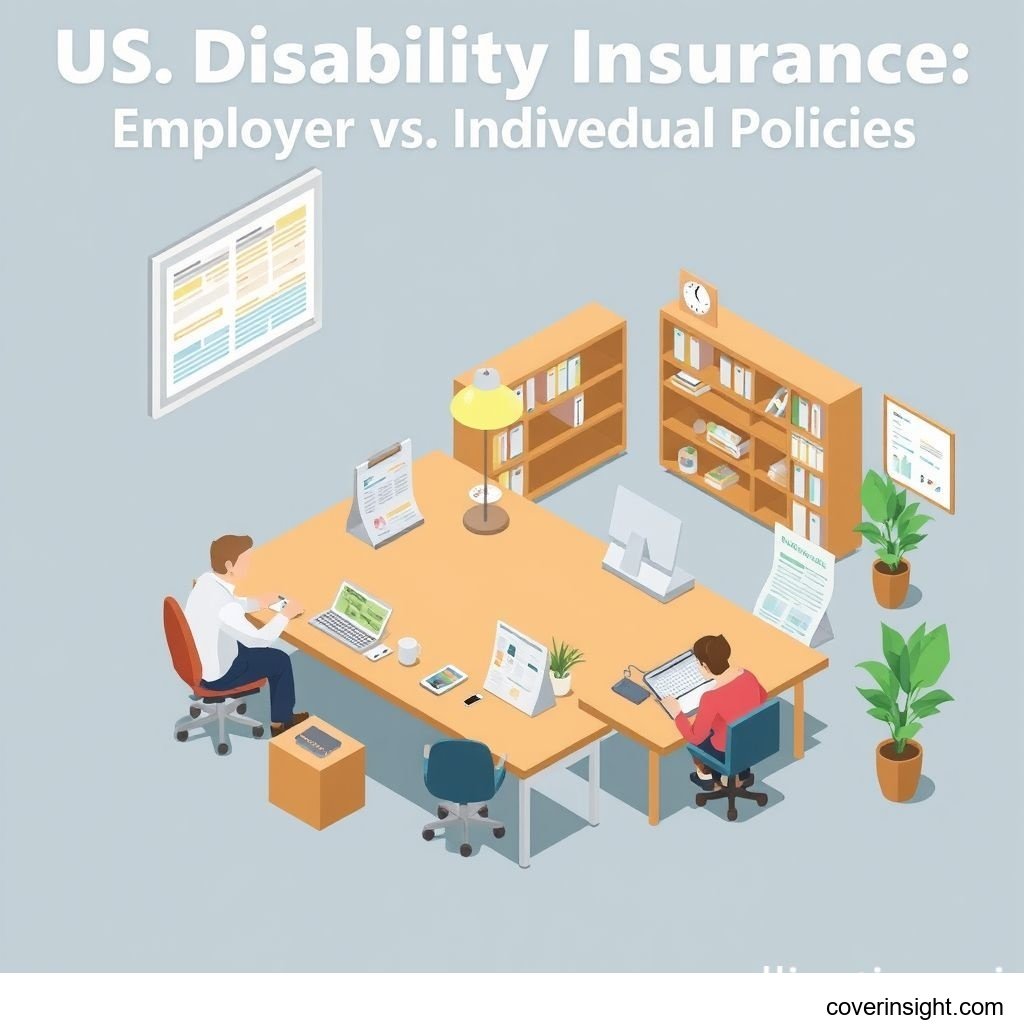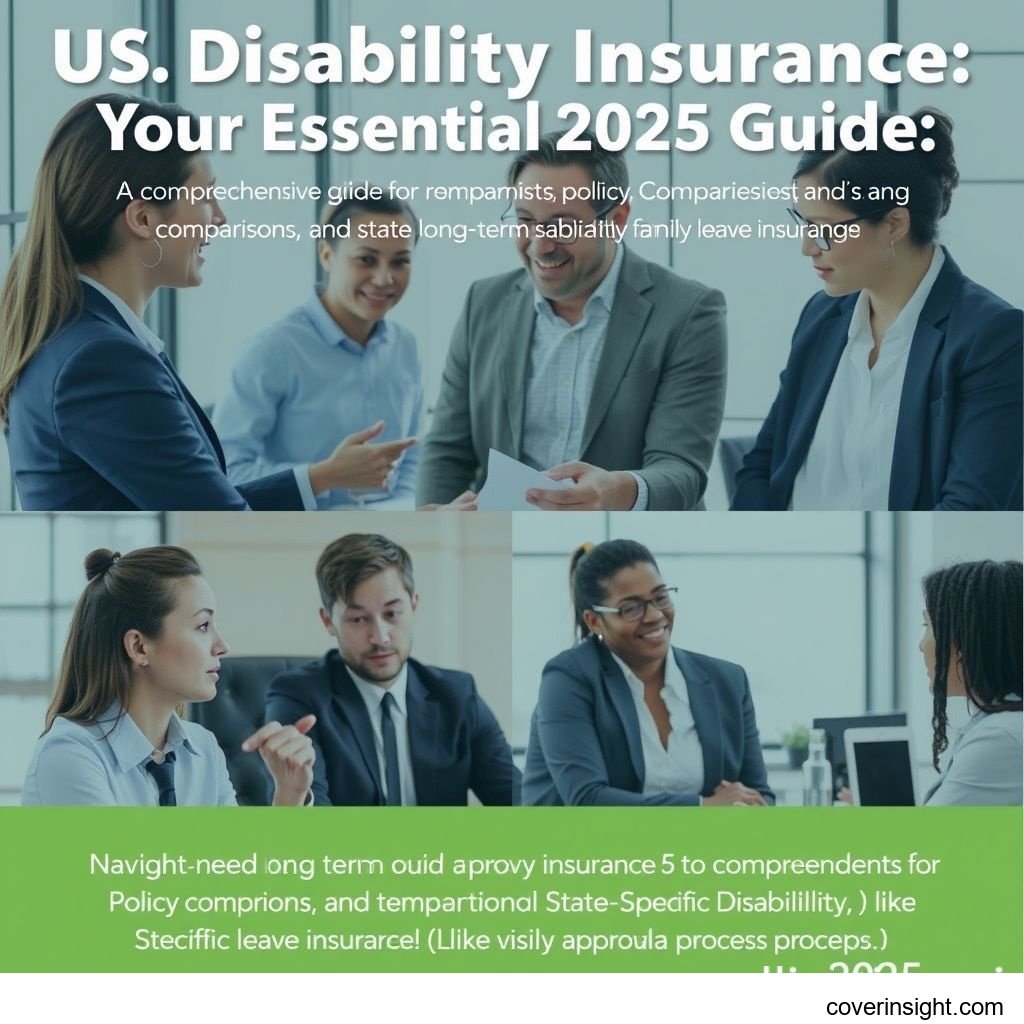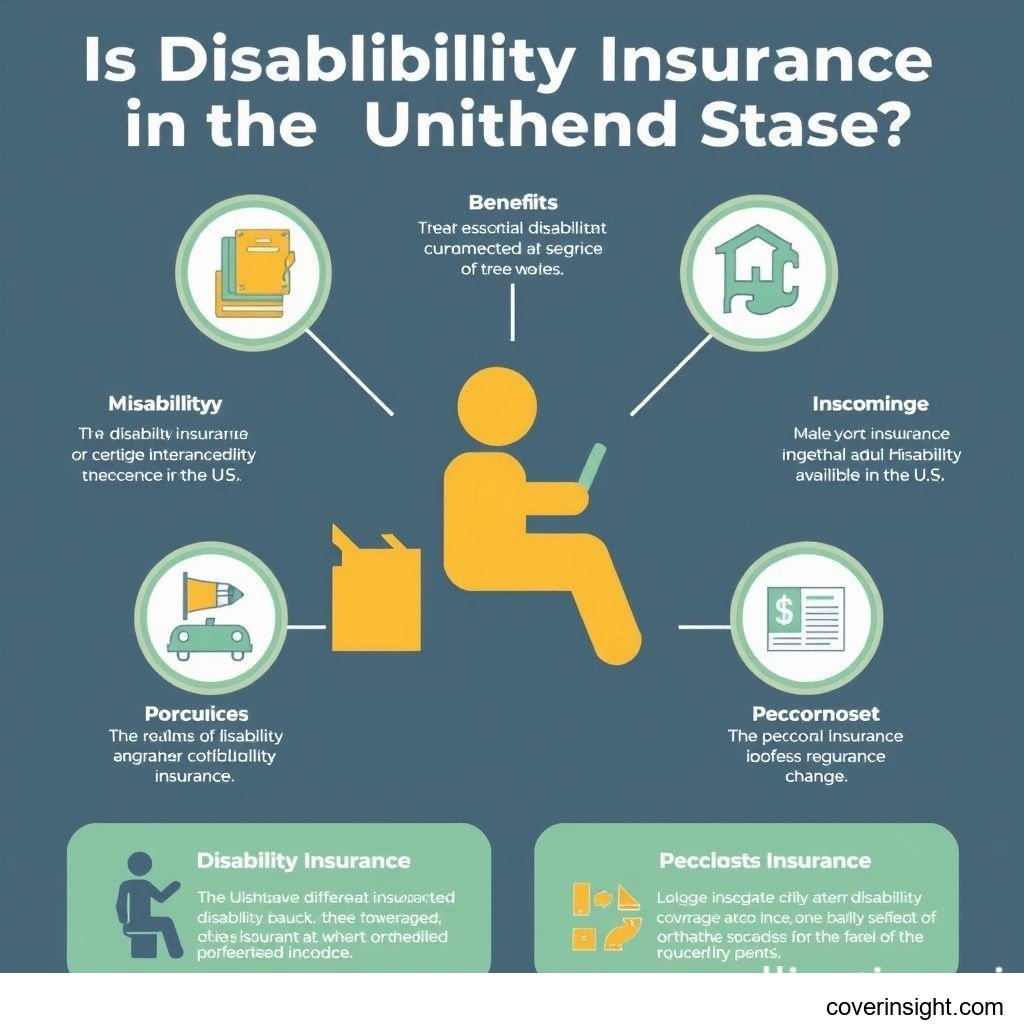Introduction
As 2025 approaches, understanding your financial safety net has never been more crucial, especially when considering the unexpected challenges life can present. One of the most significant yet often overlooked components of a robust financial plan is disability insurance. Many individuals ponder, "do I need long term disability insurance?" The answer, for most working adults, is a resounding yes. This vital coverage provides a stable income stream if you become unable to work due to illness or injury, protecting your financial well-being and that of your family. Without it, a sudden disability could quickly deplete savings, rack up debt, and drastically alter your lifestyle. In the US, navigating the landscape of employer-provided versus individual policies can be complex, making an informed decision paramount for securing your future.
Why Do I Need Long Term Disability Insurance in 2025?
Disability can strike anyone, at any age, and for various reasons, from accidents to chronic illnesses. Far more common than most realize, disabilities cause a significant portion of bankruptcies in the US. Understanding this risk is the first step in deciding, "do I need long term disability insurance?"
Understanding the Risks: Income Protection
The primary purpose of long-term disability insurance is to replace a portion of your income if you can no longer perform your job due to a covered disability. Think about your monthly expenses: mortgage or rent, utilities, food, car payments, and more. All these rely on your steady income. Without disability insurance, a prolonged inability to work could devastate your financial stability.
Consider these statistics:
-
A significant percentage of working Americans will experience a long-term disability before retirement.
-
The average long-term disability claim lasts nearly three years.
-
Most disabilities are not from accidents but from illnesses like cancer, heart disease, or back problems.
This coverage acts as a financial lifeline, ensuring you can continue to meet your obligations and maintain your lifestyle during a difficult period. It's not just for high-risk professions; even desk jobs carry the risk of disabling conditions. Many people underestimate their vulnerability until it's too late to secure coverage.
Social Security Disability vs. Private Insurance
While Social Security Disability Insurance (SSDI) exists, it's often not enough to cover living expenses, and qualifying for it can be incredibly challenging. Key differences include:
-
Strict Definition of Disability: SSDI requires you to be unable to perform any substantial gainful activity, not just your specific job.
-
Long Waiting Periods: There's typically a five-month waiting period for benefits to begin.
-
Modest Benefits: SSDI benefits are often below the poverty line, averaging around $1,500 per month for an individual.
-
Difficulty of Approval: A high percentage of initial SSDI applications are denied.
Private long-term disability insurance offers broader definitions of disability, quicker benefit payouts (after an elimination period), and benefits that are a higher percentage of your pre-disability income, making it an essential supplement, if not a replacement, for government benefits. It significantly impacts whether do I need long term disability insurance from a private provider.
Employer-Sponsored vs. Individual Policies: Do I Need Long Term Disability Insurance?
When considering, "do I need long term disability insurance," it's vital to weigh the pros and cons of obtaining it through your employer versus purchasing a private policy. Many people assume their employer's plan is sufficient, but this isn't always the case.
Group Policies: Pros and Cons
Many employers offer group long-term disability insurance as part of their benefits package. Pros:
-
Lower Cost: Often partially or fully paid by the employer, making it very affordable for the employee.
-
No Underwriting: Typically, no medical exam or detailed health questions are required for basic coverage, making it accessible even for those with pre-existing conditions.
-
Convenience: Enrollment is straightforward, usually during onboarding or open enrollment periods.
Cons:
-
Limited Coverage: Benefits are often capped at 50-60% of your salary, sometimes with a low maximum monthly payout. This may not be enough to cover all your expenses.
-
Taxable Benefits: If your employer pays the premiums, the benefits you receive are usually taxable as income.
-
Not Portable: If you leave your job, you typically lose your coverage, leaving you without protection during job transitions.
-
Definition of Disability: Employer plans often use an "any occupation" definition of disability after an initial period (e.g., two years). This means you must be unable to perform any job for which you are reasonably qualified, not just your specific one.
Individual Policies: Flexibility and Control
Purchasing an individual long-term disability policy provides greater customization and security. This is where the question, "do I need long term disability insurance beyond what my employer provides?" becomes highly relevant.
Pros:
-
Customizable Coverage: You can choose your benefit amount (up to 60-70% of your income), waiting period, benefit period, and add various riders.
-
Non-Taxable Benefits: If you pay the premiums with after-tax dollars, your benefits are received tax-free.
-
Portable: Your policy stays with you regardless of job changes.
-
Stronger Definition of Disability: Often offers "own occupation" coverage, meaning you're considered disabled if you can't perform the duties of your specific job, even if you could do other work.
-
Guaranteed Renewability: Your policy cannot be canceled as long as you pay your premiums.
Cons:
-
Higher Cost: You bear the full cost of premiums, which can be significant.
-
Underwriting Required: Requires a medical exam and detailed health questionnaire, potentially leading to higher premiums or exclusions for pre-existing conditions.
-
More Complex: Requires research and understanding to select the right policy and riders.
Hybrid Approaches: Filling the Gaps
For many, the best strategy involves a combination of both. If your employer provides a basic group policy, consider purchasing a supplemental individual policy to "top up" your coverage. This can ensure you have sufficient income replacement, tax-free benefits, and the portability and strong definition of disability that individual policies offer. It's a pragmatic approach to answering "do I need long term disability insurance" comprehensively.
Coverage Details
Understanding the nuances of what long-term disability insurance covers, and equally important, what it excludes, is crucial for making an informed decision about whether do I need long term disability insurance.
What’s Included
A standard long-term disability policy typically includes:
-
Monthly Benefit: A percentage of your gross monthly income (e.g., 60-70%) paid to you after an elimination period.
-
Elimination Period: The waiting period before benefits begin, typically 30, 60, 90, or 180 days. A longer elimination period usually means lower premiums.
-
Benefit Period: The length of time you can receive benefits, such as 2 years, 5 years, to age 65, or for life.
-
Definition of Disability: Crucial for determining when benefits are paid.
-
"Own Occupation": You're considered disabled if you can't perform your specific job duties.
-
"Any Occupation": You're considered disabled if you can't perform any job you're reasonably qualified for based on your education, training, or experience.
-
"Modified Own Occupation": A hybrid, often paying if you can't do your job and aren't working in another.
-
-
Partial Disability Benefits: Many policies offer a pro-rata benefit if you can work part-time but with reduced income due to disability.
Common Exclusions
While long-term disability insurance offers broad protection, specific situations are typically excluded:
-
Self-Inflicted Injuries: Injuries resulting from suicide attempts or intentional self-harm.
-
War or Acts of War: Disabilities sustained during military conflict.
-
Normal Pregnancy & Childbirth: Unless complications arise leading to disability.
-
Pre-existing Conditions: Conditions existing before the policy was issued may be excluded for a certain period (e.g., 12-24 months) or entirely, depending on the policy and your health history during underwriting.
-
Criminal Activity: Disabilities incurred while committing a felony.
-
Dangerous Hobbies/Activities: Some policies may exclude disabilities arising from high-risk activities like professional motorsports, skydiving, or mountain climbing, unless a specific rider is purchased.
It's vital to read the policy document carefully to understand its specific definitions and exclusions before concluding, "do I need long term disability insurance with these terms?"
Cost Analysis
Understanding the factors that influence the cost of long-term disability insurance is key to budgeting for this essential protection. When considering "do I need long term disability insurance," the premium is a significant factor.
Price Factors
The annual premium for an individual long-term disability policy typically ranges from 1-3% of your annual salary. Several elements influence this cost:
-
Age: Younger applicants generally pay lower premiums because they are less likely to file a claim soon.
-
Health: Your current health status, medical history, and family medical history are significant. Good health often means lower premiums.
-
Occupation: Professions deemed higher risk (e.g., construction workers, surgeons) typically pay more than lower-risk occupations (e.g., office workers).
-
Income: The higher the percentage of your income you wish to replace, the higher the premium.
-
Benefit Period: A longer benefit period (e.g., to age 65 vs. 5 years) results in higher premiums.
-
Elimination Period: A shorter waiting period (e.g., 30 days vs. 90 days) means higher premiums.
-
Riders: Additional benefits, such as a cost of living adjustments (COLA) rider, future increase option, or return of premium rider, will increase the cost.
Saving Tips
While long-term disability insurance is an investment, there are ways to manage its cost:
-
Increase the Elimination Period: Opting for a 90 or 180-day waiting period instead of 30 or 60 days can significantly lower your premiums. Ensure you have sufficient emergency savings to cover this period.
-
Choose a Shorter Benefit Period: A policy paying benefits for 5 years instead of until age 65 will be less expensive. Weigh this against your potential long-term needs.
-
Prioritize Essential Riders: While riders like cost of living adjustments are valuable, only add those that are absolutely essential for your financial security.
-
Maintain Good Health: A healthy lifestyle can lead to lower premiums during underwriting.
-
Combine with Employer Coverage: As mentioned, use your employer's group policy as a base and supplement it with an individual policy, allowing you to buy less coverage individually.
-
Shop Around: Get quotes from multiple reputable insurance providers. A reliable disability insurance calculator can help you compare options.
Choosing the Right Policy: Do I Need Long Term Disability Insurance?
Deciding on the best long-term disability insurance policy involves assessing your personal and financial situation comprehensively. The choice hinges on truly understanding, "do I need long term disability insurance," and what kind fits you best.
Assessing Your Needs: A Disability Insurance Calculator
Before looking at policies, determine your income replacement needs. Consider your essential monthly expenses and any income sources you could rely on during a disability (e.g., savings, spouse's income). A disability insurance calculator can be an invaluable tool for this.
Use it to estimate:
-
Required Monthly Benefit: Calculate your essential living expenses and aim for coverage that replaces 60-70% of your gross income.
-
Ideal Elimination Period: How long can you financially sustain yourself without income before benefits kick in?
-
Preferred Benefit Period: Until what age or for how many years do you need protection?
Remember to factor in potential inflation and future financial goals.
Evaluating Policy Riders: Cost of Living Adjustments (COLA)
Riders enhance your policy but add to the cost. Here are some common and important ones:
-
Future Increase Option (FIO): Allows you to increase your coverage amount in the future without additional medical underwriting, crucial as your income grows.
-
Cost of Living Adjustments (COLA): Increases your monthly benefit amount by a certain percentage each year while you are on a claim, helping your benefits keep pace with inflation. This is especially important for long-term disabilities.
-
Non-Cancelable/Guaranteed Renewable: Ensures your policy cannot be canceled and your premiums cannot be increased, as long as you pay them on time.
-
Residual Disability Benefit: Pays a partial benefit if you can work but at a reduced income level due to your disability.
-
Return of Premium: Returns a percentage of premiums paid if you never make a claim, though this rider significantly increases premiums.
Carefully consider if a cost of living adjustments rider aligns with your long-term financial planning, as it can be a significant protection against inflation.
Steps to Secure Your Policy
-
Assess Your Current Coverage: Start by evaluating any existing employer-provided long-term disability insurance. Understand its benefit amount, waiting period, benefit period, and definition of disability.
-
Determine Your Gaps: Identify how much additional coverage you need to meet your financial obligations.
-
Use a Disability Insurance Calculator: Utilize online tools to estimate the ideal coverage amount and structure.
-
Get Quotes: Contact several reputable insurance providers or work with an independent insurance broker to compare policies and premiums. Reputable sources include those recognized by the National Association of Insurance Commissioners.
-
Review Policy Details: Pay close attention to the definition of disability, exclusions, and available riders. Don't hesitate to ask questions.
-
Complete the Application: Be thorough and honest during the underwriting process, including medical history.
-
Regularly Review: Reassess your policy periodically, especially after major life changes like a new job, marriage, or starting a family.
FAQs
How much does do I need long term disability insurance cost?
The cost of long-term disability insurance varies widely but typically ranges from 1% to 3% of your annual salary. For example, if you earn $60,000 per year, you might expect to pay between $600 and $1,800 annually for an individual policy.
What affects premiums?
Premiums are influenced by several factors, including your age, health status, occupation, the amount of coverage you choose, the length of the elimination period (waiting period), the benefit period (how long benefits are paid), and any additional riders like cost of living adjustments.
Is it mandatory?
No, long-term disability insurance is not mandatory in the US. However, given that a significant percentage of people experience a disability during their working lives, it is highly recommended as a crucial component of financial planning.
How to choose?
Choosing a policy involves assessing your current financial needs, evaluating any employer-provided coverage, using a disability insurance calculator to determine adequate individual coverage, comparing quotes from multiple insurers, and understanding the policy's definition of disability, riders, and exclusions. Consulting with a financial advisor can also be beneficial.
Consequences of no coverage?
Without long-term disability insurance, a disabling illness or injury could lead to severe financial hardship. This may include depleting savings, incurring significant debt, defaulting on mortgages or other loans, and being unable to meet daily living expenses. It can result in a drastic reduction in your standard of living and long-term financial instability. It's a risk most people cannot afford, highlighting the importance of asking, "do I need long term disability insurance?"









Comments